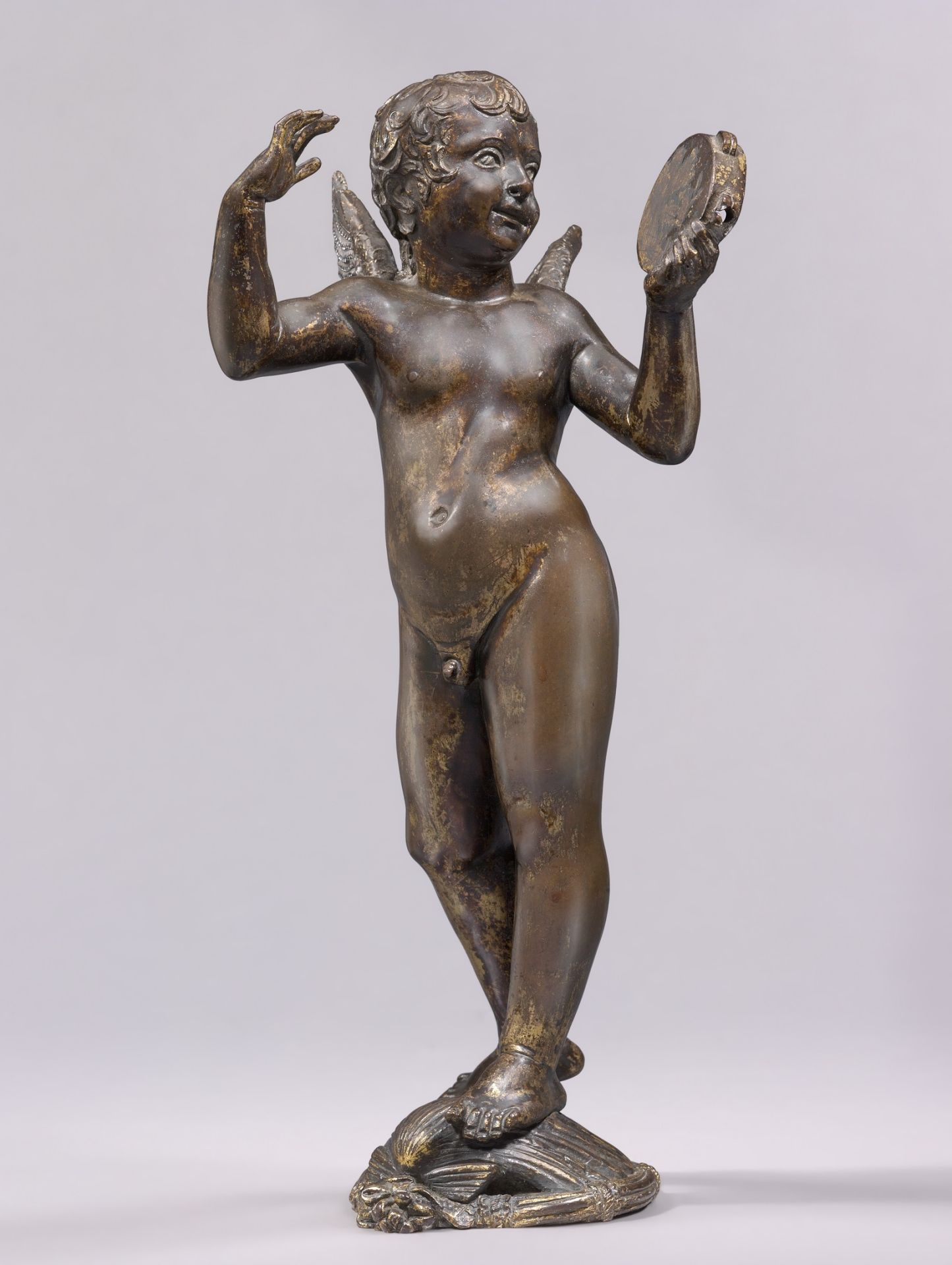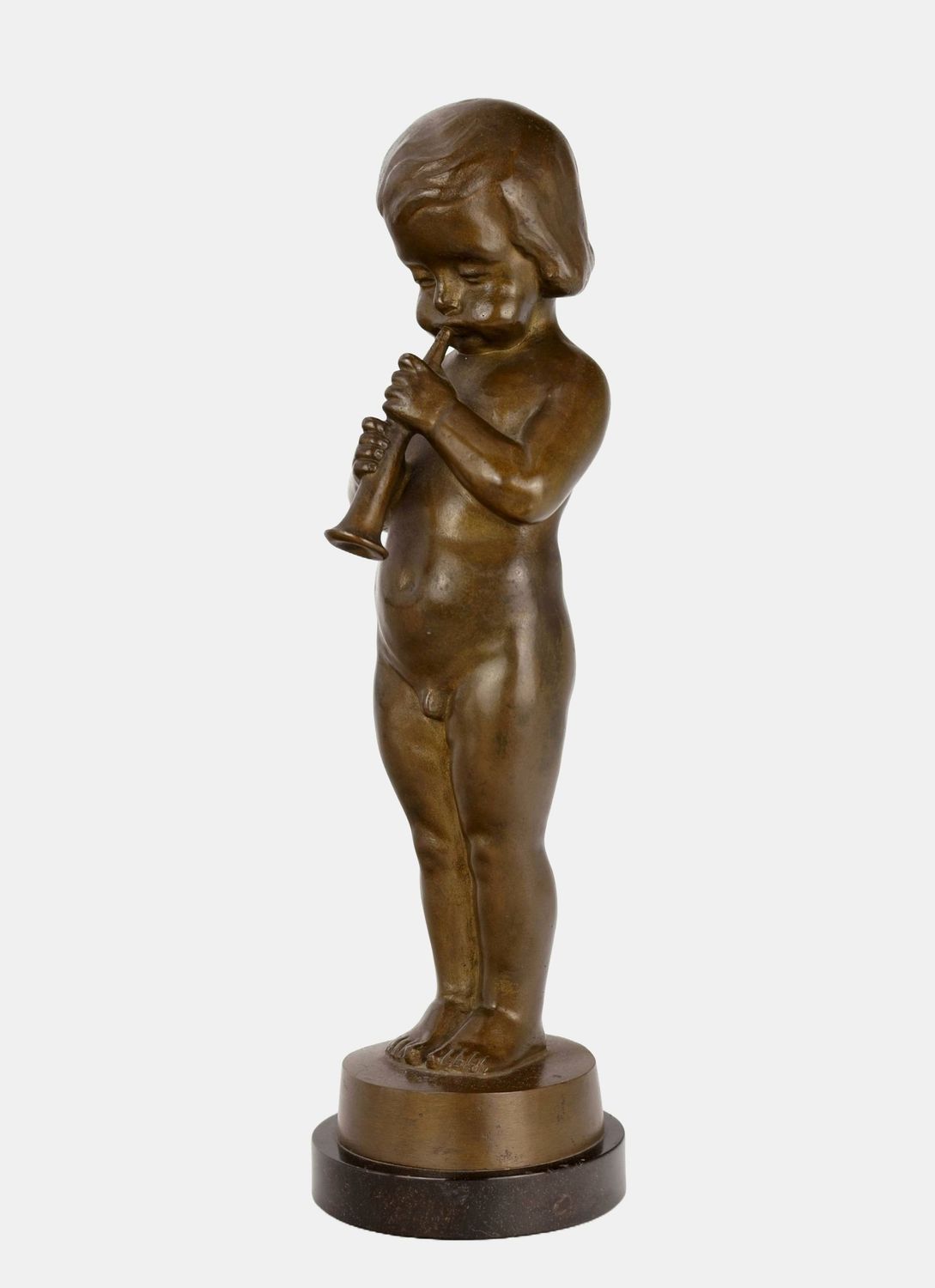Harders, Hans (1875-1955), Boy playing the shawm, c. 1930
Hans Harders(1875 Mörel - 1955 Berlin), Boy playing the shawm , around 1930. Dark patinated bronze with round plinth on a black marble base (2 cm high), total height 35 cm, diameter of the cast base 8 cm, weight 3.86 kg, foundry mark “Lauchhammer Bildguss” on the reverse of the plinth. Listed in the Lauchhammer catalogs as “Bildguss 26” designed by Hans Harders, unsigned.
- Slightly bumped in places, patina rubbed in places, especially on the back, upper edge of the marble base with minimal chipping, otherwise in good condition.
- The transience of sounds -
At first glance, the boy's natural appearance suggests that Hans Harders modeled him after a young boy. In fact, the artist was inspired by Donatello's famous putti playing music on the baptismal font in Siena Cathedral, which the Italian created in 1428. One of them, the tambourine-playing putto, has been in the Berlin Sculpture Collection since 1902. Harders obviously based the design of the limbs on the work of the Renaissance artist. Even the size corresponds to the model. And yet Harders has created an entirely unique work of art with a completely different expressive content.

The Berlin artist dispenses with the artificial yet natural-looking torsion of Donatello's putto and instead shows his boy in a motionless, upright pose. The dancing extroversion is transformed into an inner mood related to the music. The motionless position creates a correspondence between the body and the shawm. The boy is completely absorbed in the act of making music, which is also expressed physically, especially in the puffy cheeks of the face, which is conceived in a completely different way than Donatello's. Here, Harder studied baroque trombone-blowing angels, who also have a high forehead. In general, the whole body is a little fuller than Donatello's - in the manner of baroque putti - which is particularly evident in the folds of fat on the thighs. The larger body volume suits the music-making on the wind instrument and also lends the imagined notes a greater volume.
If, in Donatello's work, the putti of the Renaissance became children, although they remained winged, here we see a putto-like human boy in ancient nudity, to which Donatello also alludes. The shawm is a reminiscence of antiquity, of Virgil's shepherds' bucolic music heralding the happy Golden Age. Harder's boy, however, is not performing a joyous dance. Rather, he is completely immersed in the melody he has created, which displays a deeply melancholy quality that is not counteracted by the boy's figure, but rather intensified. The paradise from which he comes as a putto is lost. All that remains is to listen to the sounds that fade away, just as paradise itself has faded away. And yet music itself offers the soul a temporary home, because, as the then widely read philosopher Arthur Schopenhauer explains in his work The World as Will and Representation, it offers aesthetic salvation from the constant drive of an accelerating world.
About the artist
Hans Harder's artistic talent was already evident as a child, when he made animal figures out of clay. His parents, farmers from Mörel, encouraged their son's talent and enabled him to study at the art academies in Berlin and Dresden. Following his artistic roots as a sculptor, he became a sculptor and medalist. Based in Berlin, his bronze works were produced by the Rosenthal & Maeder foundry and later by Preiss & Kassler. From the 1920s he also created models for the porcelain manufacturers Fraureuth and Hutschenreuther.

